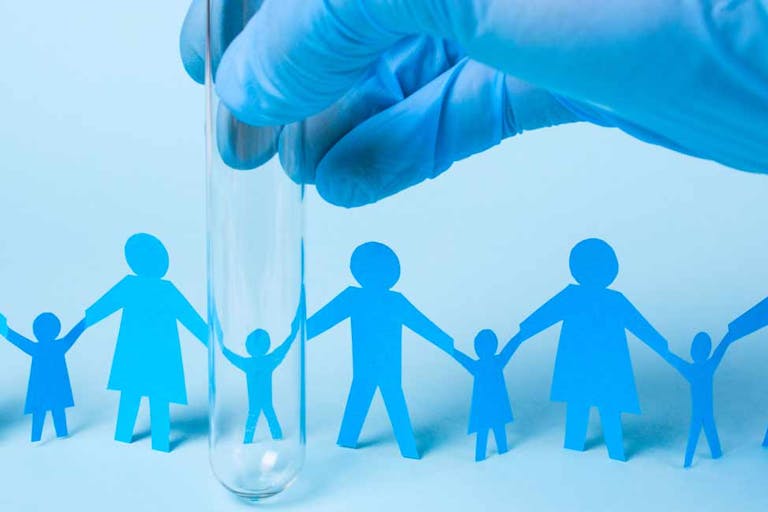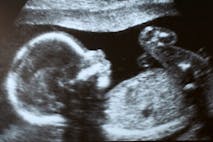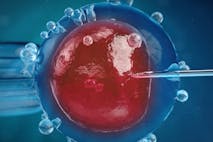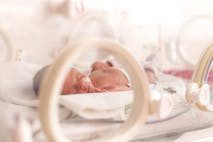
Pastor misrepresents pro-life position in ‘scientifically illiterate’ defense of IVF
Nancy Flanders
·
Eugenics and IVF: Couples can now ‘choose’ children based on a genetic score
A one-year-old girl named Aurea, born through IVF, is believed to be the first person born after passing a new type of DNA testing, pinpointing her as the healthiest of her siblings — whose whereabouts are unclear at this time. Called preimplantation genetic testing for polygenic disorders (PGT-P), the test gives parents a risk factor score for certain health conditions in their embryos.
IVF, with even more human engineering
According to Bloomberg, Aurea’s father Rafal Smigrodzki said that he and his partner underwent fertility treatments in 2019, using two separate women as the egg donor and surrogate. They created an astounding 33 embryos, and were given the choice of four embryos to implant. A company called Genomic Prediction told them which of the embryos had the best genetic odds of not developing conditions such as heart disease, diabetes, or cancer in adulthood. One embryo — Aurea — had the highest “polygenic risk score,” and is the one they chose to implant for the IVF process to take place.
As reported by Babble, Smigrodzki was able to “meet” the embryos and learn each of the risk factors he or she carried before Aurea became the lucky chosen one. He and his partner were especially focused on any risk of heart disease and breast cancer.
READ: ‘Leftovers’: The dehumanizing language of the IVF industry
“Monogenic screening might tell you that one embryo has a higher risk of BRCA, which can result in breast cancer,” his partner told Babble. “The polygenic screening gave us a much more sophisticated report and greater choice. But really we just wanted to avoid the embryos that are at really great risk of disease – it is as simple as that.”
The men wanted to “avoid” the children they created who had an increased risk of certain diseases. It’s hard to even imagine purposefully avoiding a child because she or he might have a health condition someday. But that’s what is being promoted here. This process doesn’t “eliminate” diseases, it eliminates lives — at least 29 embryos were not given the chance at life in just this one case.

Smigrodzki is himself a neurologist with a doctorate in human genetics, and believes parents have a duty to give their children the healthiest start to their lives — including determining which of their children are considered the least risky, health-wise, as embryos, and apparently giving only those children the opportunity to live. He did not tell Bloomberg what should happen to the other children. And despite his enthusiasm for polygenic risk scores for embryos, the New England Journal of Medicine pointed out the major problems with this so-called medical advancement in a July special report.
What are we risking?
Article continues below
Dear Reader,
In 2026, Live Action is heading straight where the battle is fiercest: college campuses.
We have a bold initiative to establish 100 Live Action campus chapters within the next year, and your partnership will make it a success!
Your support today will help train and equip young leaders, bring Live Action’s educational content into academic environments, host on-campus events and debates, and empower students to challenge the pro-abortion status quo with truth and compassion.
Invest in pro-life grassroots outreach and cultural formation with your DOUBLED year-end gift!
Testing children for their health risks is a form of eugenics, and is just steps shy of building designer babies based on eye color, hair color, height, and IQ. In the U.S. and Europe, some companies are already testing embryos for their risks of schizophrenia and breast cancer. Discarding embryos because they might have one of these conditions in the future is discriminatory, and it remains unclear where the line would be drawn if one ever even is.
Besides the eugenic ideas that support such a testing system, the genetic data is heavily eurocentric, said the Journal. This means it is mostly available to white couples — and at $400 per embryo after the initial cost of $1,000, its real availability is to wealthy white couples. Health disparities already exist among races and economic classes, especially for Black pregnant women and their babies. Such DNA testing technology could make that health gap even wider. It could send us back to the Nazi idea that certain racial traits are more desirable than others.
READ: ‘Three parent’ IVF and the controversy of ‘constructing a baby’
The testing is also very inaccurate. It checks for probabilities, not certainties. And the differences among the embryos, said Bloomberg, “are likely to be very small.” There is no guarantee that the embryo with the lowest risk of developing cancer will actually remain cancer-free. Regardless, destroying a life because that individual might someday develop cancer or diabetes is horribly discriminatory and ableist. There’s is more to a life than a diagnosis, as the millions of people that live with diseases and disabilities can attest to.

The fertility industry is also highly unregulated, and has been plagued with controversy. The FDA already chooses not to regulate pre-implantation embryo testing, which tests embryos for certain health conditions such as cystic fibrosis before use in IVF. Fertility clinics also make their own rules that parents must adhere to concerning which embryos are used, and which are destroyed for not meeting certain criteria. Embryos are graded on their “quality,” and discarded if they don’t measure up. Now, this new testing promises to take this discrimination even further.
“I can see the day where these results are just a normal part of your baseline medical notes,” said Simon Fishel, a UK physiologist and biochemist whose work helped create the first baby from IVF. “A world where PGT is a normal part of reproduction, of having babies. We should be moving faster on this. We have seen in the last year how quickly we can get approval for a vaccine that is currently being injected into people worldwide. PGT-P could prevent so much suffering, and benefit health economics, if made universally available sooner rather than later.”
This is not scientific advancement aimed at curing diseases, but at eliminating human beings at risk of having those conditions someday in the future. It is a clear-cut example of eugenics in action. While proponents believe these children will feel special knowing that they were “chosen,” the truth is children created in manners such as this often grow up to feel like a commodity — a product their parents either bought or sold.
“Like” Live Action News on Facebook for more pro-life news and commentary!
Live Action News is pro-life news and commentary from a pro-life perspective.
Contact editor@liveaction.org for questions, corrections, or if you are seeking permission to reprint any Live Action News content.
Guest Articles: To submit a guest article to Live Action News, email editor@liveaction.org with an attached Word document of 800-1000 words. Please also attach any photos relevant to your submission if applicable. If your submission is accepted for publication, you will be notified within three weeks. Guest articles are not compensated (see our Open License Agreement). Thank you for your interest in Live Action News!

Nancy Flanders
·
Analysis
Cassy Cooke
·
Analysis
Angeline Tan
·
Analysis
Cassy Cooke
·
Politics
Madison Evans
·
Opinion
Nancy Flanders
·
Issues
Nancy Flanders
·
Human Interest
Nancy Flanders
·
Investigative
Nancy Flanders
·
Pop Culture
Nancy Flanders
·
Human Interest
Nancy Flanders
·